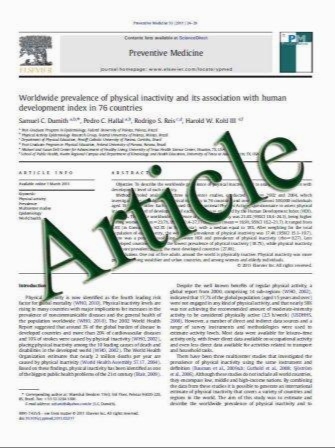18F-FDG PET as a diagnostic procedure in large vessel vasculitis—a controlled, blinded re-examination of routine PET scans
- نوع فایل : کتاب
- زبان : انگلیسی
- مؤلف : Petra Lehmann & Sarah Buchtala & Nelli Achajew & Peter Haerle & Boris Ehrenstein & Hamid Lighvani & Martin Fleck & Joerg Marienhagen
- چاپ و سال / کشور: 2011
Description
Large vessel vasculitis can be visualized by 18F-FDG positron emission tomography (PET). However, the diagnostic value of 18F-FDG PET is yet to be determined. We therefore performed a study to evaluate this technique for the diagnosis of giant cell arteritis (GCA) and Takayasu arteritis (TA). Patients with GCA or TA, who fulfilled the American College of Rheumatology (ACR) criteria and also had a pathologic PET scan in clinical routine, were selected. These PET scans, as well as PET scans obtained from age- and sex-matched control patients, were independently re-evaluated by two experienced nuclear medicine experts. PET scans of 20 patients (17 GCA, 3 TA) and 20 controls were evaluated. In 85% of the examinations, both observers agreed on the diagnosis or exclusion of vasculitis. Specificity was calculated with 80% and sensitivity with 65%, yielding an overall diagnostic accuracy of 72%. The mean maximum standardized uptake values (SUVmax) of the subclavian region was significantly higher in vasculitis than in control patients (2.77±1.02 vs 2.09±0.64; difference 0.69; CI95%: 0.14–1.24, p=0.0161). SUVmax of the iliacal regions did not differ significantly. Receiver- operating characteristics (ROC) analysis revealed the highest sensitivity of 90% (CI95%: 68–99%) and specificity of 45% (CI95%: 23–69%) for a SUVmax cutoff point of 1.78 (AUC 0.72, (CI95%: 0.56–0.86). PET findings are reproducible and independent of the observer. The low sensitivity and specificity indicate that enhanced vascular uptake might be overrated if clinical details are suggestive for vasculitis. Therefore, the diagnosis of large vessel vasculitis should not be based on PET findings only
Clin Rheumatol (2011) 30:37–42 Received: 5 March 2010 / Revised: 3 September 2010 / Accepted: 6 October 2010 / Published online: 23 October 2010


